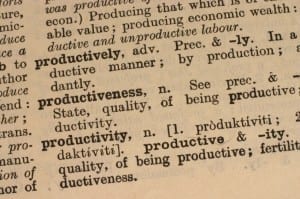Improve Your Productivity in Your Home Studio Part 1
When it comes to recording at home, there are many questions and concerns that you must consider. After deciding what equipment to buy that works the best for you while staying within your budget, you've also got to decide where the best place in your home to record from an acoustic perspective. And the questions certainly don’t stop there – as you record you refine your methods and workflow to best fit your own specific needs, and this is an ever-evolving process.

However, too many home recording engineers overlook the question of how productive they are in their studio space. Recording at home gives you the huge advantage of being able to work on your own schedule, but all too often this blessing quickly becomes a curse. This curse includes far too much time spent setting up for recordings and cleaning up your space and far too little time actually recording.
The following are a few simple tips that can improve your productivity. The great thing about being more productive in the home studio is that it’s less about big and novel ideas and more about remembering and implementing a few simple things that can drastically increase (and improve) your recording output.
Here in part one of this series we’ll look at improving productivity through your physical recording setup, and part two will explore how to improve your recording process.
Consider Workflow When Setting Up Your Space
The largest loss of time in home studios most likely is spent setting up (and then rearranging and later putting away) your recording equipment and instruments. This is an inherent problem when working at home, as your space (usually) was not designed to be a studio, and obviously you have to work with what you have.
Though this will always have limitations, a great way to combat these problems is to take the initial time to find the best recording setup for you, and then use the exact same setup every time. For some this means making sure the MIDI keyboard is directly in front of the computer screen and a guitar is within arms length to the side. Whatever your preferences, get in the habit of starting each session by setting up in the exact same way, as you’ll soon become a master of quickly getting ready to record without wasting time. Of course, the more of your equipment you can leave out and ready to go, the better, though this certainly is not an option in all home studios.
Consider Ergonomics in Your Studio
When you are designing your setup, be sure that you are as comfortable as possible when you’re recording. Ergonomics doesn't just mean having a comfortable chair (though this is very important!), but also that you’re not twisted in an unnatural way every time you record a keyboard part. Be sure to take this into account when designing your setup.
Consider Your Room
Another inherent problem with recording at home is that you have to contest with acoustic spaces that are designed for recording. Certainly this problem will vary by room, but accounting for the room in your recording can quickly become a huge part of your studio time.
Like finding the best setup, finding the best way to account for your room sound will take some time. However, this is a time investment you should make to avoid having to take the time to “fix” your room sound in every instrument you record.
A great way to start is by making physical changes to the room itself if possible. This can range from permanent solutions like installing acoustic foam to temporary measures like hanging a blanket behind you to record vocals. For temporary fixes, be sure to make these part of your setup process for every session, which will save time in the long run.
Be sure to check out the second part of our productivity series, which focuses on improving productivity during the actual recording process.




